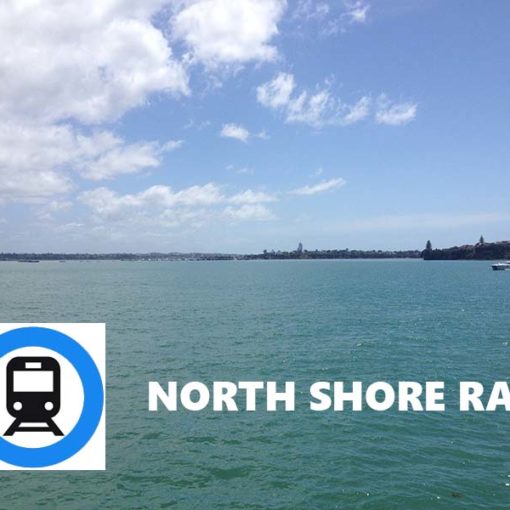Our submission on the draft Regional Land Transport Programme relies heavily from the excellent work of Matt Lowrie, who has his submission over at transportblog.
The CBT has extended the list of projects we think worthy of consideration to be:
- Investigation and design of a busway along State Highway 16 between Westgate and Waterview, to support the significant urban development proposed for the northwest part of Auckland. This work needs to occur as soon as possible, so that it can inform NZTA’s proposed upgrade to the motorway.
- The CBT understands (from AT Board Papers) that significant changes to the operational structure of Auckland’s public transport network are likely to occur over the next three years. There will be infrastructure requirements arising from these changes, such as bus priority measures, relocation of bus stops, road widening to eliminate bottlenecks for buses, key interchanges (both between bus and rail, and bus to bus). To ensure the success of the changes to the PT network, funding needs to be set aside for necessary infrastructure improvements.
- To properly take advantage of integrated ticketing, implementation of a zone-based fare system is necessary. This may require some funding in the short-term to cover any revenue loss while the system is being fine-tuned. Given that integrated ticketing is yet to be implemented (ignoring the soon to be disestablished Snapper card which has been branded as “Hop”), we believe further investment is going to be necessary to implement AIFS, however there appears to be zero budget for this in the 2012/13 year on p.44.
- More emphasis should be given to connected cycle lanes for commuting purposes. The emphasis in cycling is on developing cycleways across the region but there are no reasonable connected cycle lanes in the CBD to provide safety for those wishing to cycle to their workplace in the CBD in safety. At least two such cycle lanes should be developed north-south and two east-west across the CBD. Walk/cycleway over the harbour bridge should be included as a funded project
- More pedestrianisation of the CBD should be envisaged, eg shared space in High Street or Queen Street.
- Rail link to airport – should be better defined as rail extension from Onehunga to Mangere then via airport to Manukau; Mangere communities are poorly served with PT and would greatly benefit from at least a first stage extension of the Onehunga line across the Manukau harbour.
- We support the AMETI project but would ideally like to see longer term planning for a rail corridor west-east across the Manukau region, to Botany or further then linking back to Panmure.
- The extension of the Wynyard Quarter tram to Britomart and beyond along Tamaki Drive and / or Queen Street.
- The Avondale – Southdown rail corridor is identified as a proposed future RTN, however there appears to be no work towards achieving this in the draft RLTP.
- We support the inclusion of the City Rail Link project in the programme of work. The arrival of electric trains will put more pressure on the rail system and increasing capacity further will be impossible without making Britomart a through station.
We’d also like to know what happened to the projects that were supposed to be on the old RLTP:
The preamble on p.5 states that the first RLTP was produced in 2009 by the former Auckland Regional Land Transport Authority.
The CBT submits that there should be some attempt to reconcile this previous programme of work with the programme of work contained in the latest draft RLTS.
It would also be beneficial to know if the projects in the preceding RLTS achieved desirable outcomes or not, or even if they have been completed at this point.
For instance, the preceding 2009 RLTS contained this line item on p. 56:
Project Total Cost 2009/10 Cost 2010/11 Cost 2011/12 Cost Auckland Integrated Fare Solution $70,000,000 $15,000,000 $35,000,000 $20,000,000 We know that AIFS is still yet to be implemented in Auckland, but there is little explanation at all of the remaining components to be implemented in the draft RLTS. There are bound to be other projects which are equally “disconnected” between the two plans.
And we point out the inadequacy of the project prioritisation section of the document:
How projects are prioritised is given in only the most general sense on p. 26 and in Appendix 3.
In terms of calculating project benefits, recent research overseas show that predicted travel time savings rarely persist. In the UK, for example, average travel times have remained static at about half an hour per trip since the 1970’s. (David Metz).
Recently an NZTA study found that many commuters actually like spending time travelling and don’t consider the time to be wasted. However these findings are not reflected in the current Economic Evaluation Manual for roading projects.
The RLTS talks about efficiency only in terms of the BCR, however there is no attempt to define how costs and benefits are calculated. The assumption is that the BCR calculation is consistent with the Economic Evaluation Manual. If this is the case then the calculation of benefits and costs should be challenged by the RLTS, particularly in the Auckland context.
In the Auckland region, greater emphasis should be placed on projects that reduce pollution. For the good of the economy, projects which reduce consumption of fossil fuels should also have a higher benefit weighting than those that do not.
There also needs to be a strategic focus that acknowledges the very strong possibility of increasing oil prices for the foreseeable future, and that projects which are not dependent on cheap oil for their viability should be promoted ahead of projects which are.

